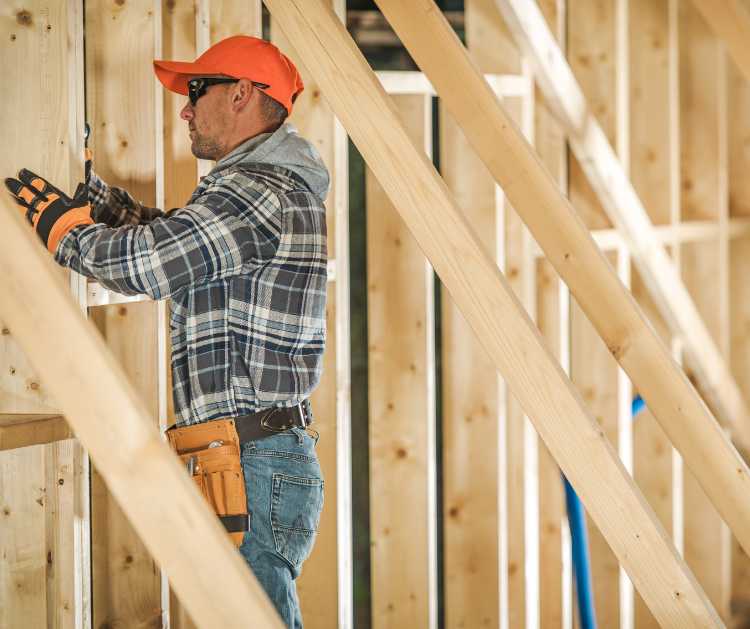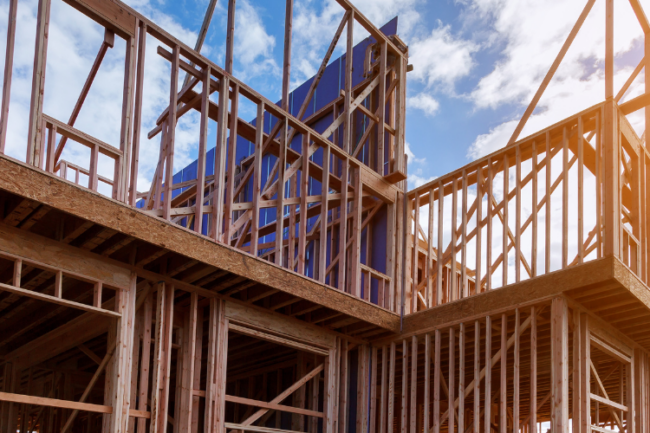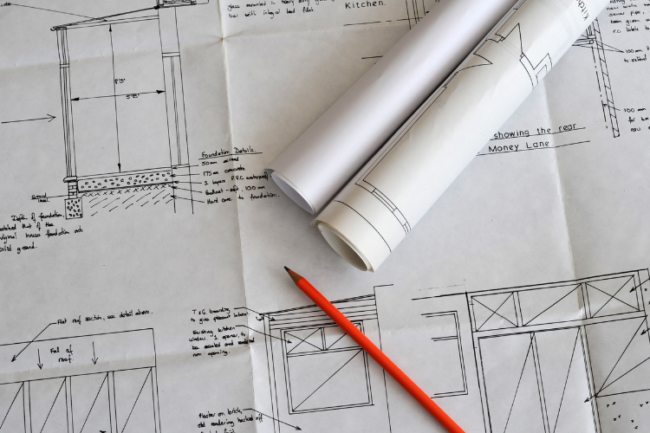Finding the perfect property that aligns with your vision and lifestyle can be challenging. The decision to build a new home or purchase an existing one adds another layer of complexity, especially when considering construction loans. Here we uncover construction loans, and your guide to financing a new home build.
Understanding construction loans
Embarking on a construction project often requires financial support, and this is where construction loans come into play. These loans allow you to gradually borrow money throughout the construction process, ensuring you have the necessary funds at each stage.
To Build
The build proposition
- Customisation and personalisation – One of the most enticing aspects of building is the ability to customise every inch of your space. From floor plans to finishes, you have the creative freedom to shape your vision.
- Energy efficiency and modern technology – New constructions often integrate the latest in energy-efficient technologies and modern conveniences, potentially leading to long-term savings and increased property value.
- Avoid renovation hassles – Building from the ground up means you won’t have to deal with the quirks and potential renovation challenges that come with older properties.
The challenges of building
- Time and patience – Building a home takes time. Delays due to weather, permits, or unforeseen circumstances can test your patience.
- Upfront costs – The initial costs of construction can be higher than purchasing an existing property. Managing finances during the building phase requires careful planning.
- Uncertainty – Until your new home is complete, there’s an inherent level of uncertainty. Unexpected issues may arise, impacting timelines and budgets.
Construction Loans: Guide financing a new home build
Types of construction loans
Standard variable rate home loans – A home loan to suit your needs and be ready for whatever life brings, with flexible product features like offset, redraw, various repayment options and more.
- Terms ranging from 1 to 30 years.
- Redraw facility
- Offset
Low fee home loans – A home loan with a discounted interest rate, low fees and some flexible features to suit your needs for the life of your loan.
- Terms ranging from 1 to 30 years
- Redraw facility
Considerations in construction loans
- If borrowing for non-construction purposes simultaneously, separate loan accounts are required.
- Licenced builders and fixed-price building contracts are essential.
- Construction loans are suitable for personal investment or residential purposes.
Benefits of construction loans
- Progressive drawdown of funds, known as progress payments.
- Interest-only payments during the construction phase.
- Ability to make additional payments at any stage.
Trade-offs of construction loans
This loan type may not align with your preferences if:
- You prefer the certainty of fixed monthly payments.
- You anticipate switching your construction loan to a different product type, such as a Fixed Rate home loan, before the construction is completed. Please note that switching is not available during the progressive drawing phase.
- Your goal is to build properties for immediate sale.
- Your construction plans involve more than two dwellings on the same title.
Timeframes in construction loans
- Commencement within 12 months from the Disclosure Date.
- Completion within 24 months from the Disclosure Date.
- Adherence to standard lending criteria
How much deposit do you need VS How much you can afford for your construction loan
Construction loan deposit insights
For a construction loan, a common target is a 20% deposit, aligning with lenders’ preference for an 80% loan-to-value ratio (LVR). However, reaching this 20% goal may not be necessary, as some lenders offer flexibility through Lender’s Mortgage Insurance (LMI). LMI allows borrowers to secure a loan covering up to 95% of the property value, requiring only a 5% upfront contribution.
Assessing affordability
Before pursuing your dream home, it’s crucial to evaluate its affordability. While mortgage calculators offer a rough idea of borrowing capacity, they fall short in considering all personal circumstances or loan eligibility factors.
Factors influencing borrowing capacity encompass income, savings, future financial outlook, credit history, monthly expenses, loan type, term, and interest rate. It’s important to distinguish between borrowing capacity and affordability. Despite seemingly affordable current interest rates, lenders use a higher rate (2 to 3% higher) when calculating borrowing capacity. Affordability extends beyond finances to encompass lifestyle choices and future plans.
In summary, the 20% deposit target for a construction loan offers flexibility with the option of LMI. Evaluating affordability involves considering various personal and financial factors, emphasising the distinction between borrowing capacity and daily lifestyle choices.
Check your borrowing capacity here.
Planning your build
Once you know how much you can afford, you can start planning your build.
- Research – Explore available options in your ideal location and price range. Assess sustainability, infrastructure, and local rules and regulations.
- Choose a builder and contracts – Spend time finding the right builder through recommendations. Ensure a signed fixed-price building contract.
- Draw up plans and get a fixed-price building contract – Detailed plans and costings provided by the builder. Legal review of the building contract is recommended.
- Out of contract items – Additional improvements or renovations, separate from the fixed-price building contract. Must be formally quoted for both supply and installation.
- Have your plans approved – Approval process by the local council or an accredited consultant.
- Apply for a construction loan – Before you apply for a home loan, make sure you consider additional costs such as Stamp Duty, legal fees and costs associated with your loan.
Finalising your loan involves gathering specific documents beyond the initial loan application requirements, including evidence of income, expenses, assets, and liabilities. These additional documents, usually obtained from your builder, are essential for completing necessary valuations. Upon the approval of your application, you will be issued a letter of offer and a contract for your newly approved construction loan.
Construction loans offer a financial bridge to turn your dream home into a reality. Whether you choose to build from scratch or opt for an existing property, understanding the nuances of each path will empower you to make an informed decision on your journey toward homeownership. If you would like to speak to a broker about your options, get in touch here.
Disclaimer: The content of this article is general in nature and is presented for informative purposes. It is not intended to constitute tax or financial advice, whether general or personal nor is it intended to imply any recommendation or opinion about a financial product. It does not take into consideration your personal situation and may not be relevant to circumstances. Before taking any action, consider your own particular circumstances and seek professional advice. This content is protected by copyright laws and various other intellectual property laws. It is not to be modified, reproduced, or republished without prior written consent. Content developed in partnership with IFPA.
Subscribe to our newsletter to read about ‘All things finance’
At UFinancial, we love talking about finance-related matters. From home loans and refinancing to financial planning, investing, and tax.





